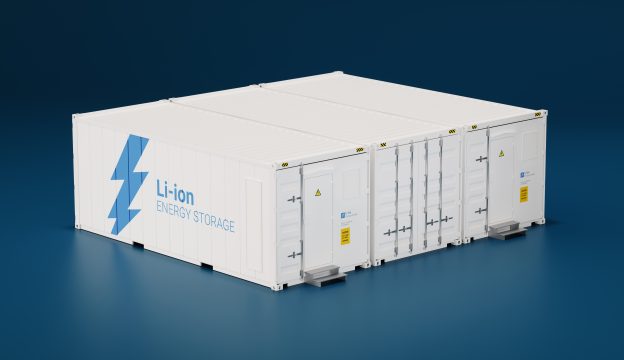
Distributed generation (DG) is defined as small-scale electricity generation located very close to end users. This concept is contrary to centralized generation, where a large power plant (usually thermal or nuclear) supplies electricity to end users over long distance via a regional grid. Focusing on diversity and flexibility, a DG network deploys small-scale generation and energy storage systems that can directly serve nearby communities or be connected to the grid. These on-site and modularized generation systems are almost all based on renewable energies.
Over the years, developers of renewable-based distributed generation systems have devised various combinations of generation and storage technologies for the sake of reliability and performance. Lately, a German startup called SINN Power has conceived a renewable generation system that puts solar panels, wind turbines, and wave energy converters into a floating platform that operates in offshore waters. SINN Power stated that this hybrid renewable energy solution can play an important role in powering remote communities along coastlines or on islands.
Regarding specifications and features, the platform has a surface area of 12 by 12 meters and can accommodate a 20-kilowatt solar array. At the same time, a 6-kilowatt wind turbine can be inserted at each corner of the platform. Underneath the platform, the supporting frame that is submerged in water can be attached with several 24-kilowatt wave energy converters. SINN Power said that the platform is specifically designed for the marine environment. To this end, the company has adopted material technologies that will protect the generation equipment and the whole structure from the corrosive effect of seawater. The platform is also sturdy enough to withstand waves up to six meters high.
Furthermore, SINN Power has designed the platform as a modular system. This means that the different types of generation equipment can be easily taken out or swapped. For instance, the existing solar panels and wind turbines on the platform can be replaced with ones that offer higher generation capacity. The modular configuration also allows for replacement parts to be more easily obtained while increasing the adaptability of the whole system to meet different needs. SINN Power hopes that it will be able to push its concept into the production stage soon and publicly demonstrate the feasibility of a customizable renewable generation system that can combine solar panels with wave energy converters.
Since the platform is purposed for distributed generation, it has a network of sensors to help minimize the risk of equipment shutdowns or damages. The sensors monitor irregularities, changes in the environment, and potential faults that could cause malfunctions. SINN Power believes that under the ideal condition, its small floating power plant can provide sufficient green electricity to holiday resorts located on islands or in coastal areas.
The development prospects of wave, tidal wave, and ocean current energies have brightened considerably in the recent years. Besides the rhythmic ocean tides caused by the rotation of the Earth and the revolution of the Moon, waves of various sizes can also be triggered by extreme weathers, earthquakes, moving ships, and even activities of underwater creatures. For many island nations, being able to produce large amounts of electricity by harnessing these forces around them can help significantly reduce the cost of importing fossil fuels. According to an earlier study by Ocean Energy Systems (a working group under the International Energy Agency), the total installed capacity of generation systems that use energies from the world’s oceans could reach up to 750 gigawatts by 2050 under the best-case scenario. This would be twice as much as the current total installed capacity of nuclear power plants worldwide.
Initiating a wave energy project has always been difficult because of the various technical and cost hurdles. The generation system and its supporting structure have to deal with the corrosiveness of seawater and the battering force of ocean waves. In the case of SINN Power’s renewable energy platform, the question about its operational lifespan and maintenance cost will not be fully answered until it has been tested in an actual marine environment. Right now, SINN Power has created working prototypes of the wave energy converter that will be used in the renewable energy platform. They are installed along a shoreline and attached to concrete walls at the edge of the water. While the prototypes are not floating per se, SINN Power should be able to determine the durability and performance of its design by observing them in action.
(News source: TechNews. Image credit: SINN Power.)







